This site is part of various affiliate programs. Links may give us a small compensation for any purchases you make, at no additional cost to you. Please read the disclaimer policy for full details.
I know how annoying it is when your Samsung TV keeps turning off every 5 seconds and you can’t figure out what’s wrong with it.
You commonly see both the Samsung Plasma and Samsung QLED TVs turning on and off repeatedly, but this can happen with all Samsung TV models.
The most common cause is a failed update causing your TV to get stuck in a boot loop, and I’ll cover steps to fix this below.
Because this is quite a wide-ranging problem, it can have a variety of causes depending on your TV model and setup, so match up your problem to its fix below.
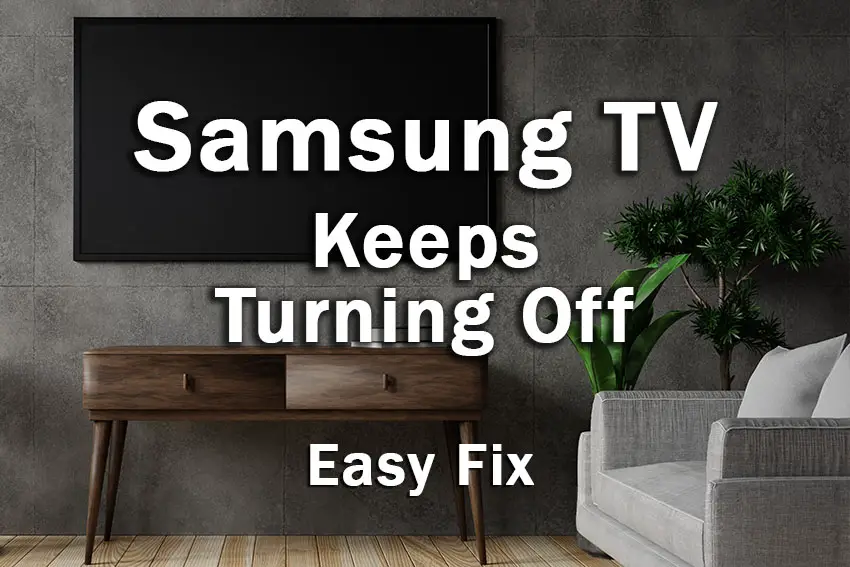
Why Does My Samsung TV Keep Turning Off?
| Possible Cause | Explanation |
|---|---|
| Software Bug | A glitch in your TV’s memory could be causing it to turn off. |
| Anynet+ Issues | A console or set-top box could be switching your TV off via HDMI-CEC. |
| Power Supply Problems | Surge protectors or dirt on the power connector might be preventing your TV from receiving a consistent voltage. |
| Auto Power Off Setup | Sleep timers and auto power off settings can switch off your Samsung TVs, although usually you get an on-screen warning of this. |
| Update Boot Loop | Samsung TVs in a failed update cycle will keep turning off from the logo screen unless you manually update your TV. |
| Remote Control Issues | Stuck buttons on your remote could be switching off your TV. |
| Internal Component Failure | Internal components on the main board / panel could be triggering the TV to shut down through an error connection pathway. |
How to Fix a Samsung TV That Turns Off By Itself
1. Cold Boot your Samsung TV
Power cycling or cold booting your TV will clear out any issues with non-permanent memory and reset your mainboard without losing your personal settings.
This is quick and painless and won’t cause you to lose any of your saved settings.
To cold boot your Samsung TV:
- Plug your TV in and switch it on.
- Pull the plug out of the wall socket.
- Wait a full 10 seconds.
- Plug your TV back in and try switching it on. You should see a red light if you have been successful.
You can also power cycle your Samsung TV if this hasn’t been successful:
- Switch off and unplug your TV.
- Hold down the physical power button on the TV for at least 15 seconds.
- Wait for at least 30 minutes for any residual power to drain from the TV’s capacitors (which are capable of storing charge for several minutes).
- Plug your TV back in and try switching it on.
- If this doesn’t work the first time, give it another couple of rounds, as it can sometimes take a few goes to kick in.
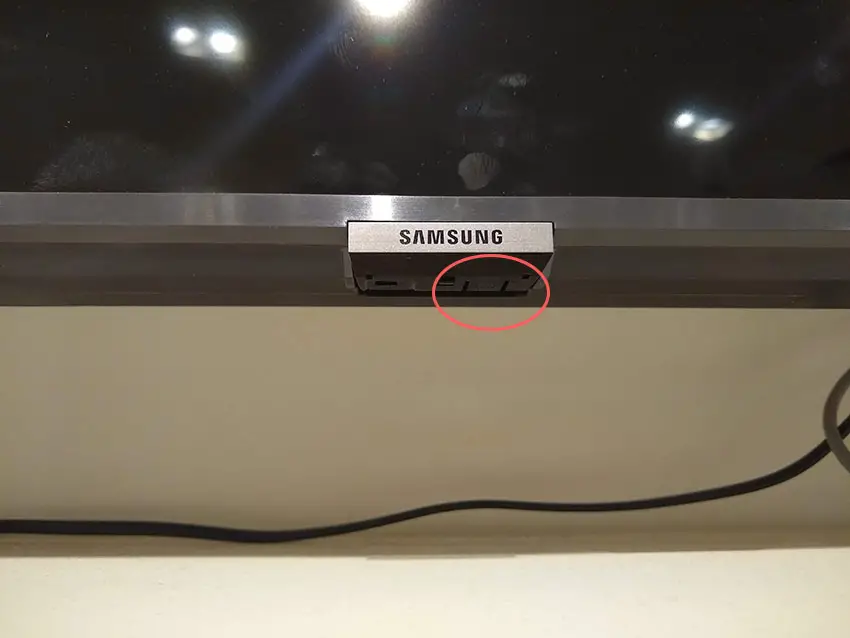
Make sure you do wait for the full 30 minutes before plugging your TV back in – you would be surprised how long the components within your TV can hold a charge, and you want to make sure it has fully reset.
Although this seems a very basic step, don’t overlook it because, in the vast majority of cases, a simple soft reset fixes most issues.
2. Take Out Your Samsung Remote’s Batteries
Remote control problems, either stuck buttons or low batteries, can cause your TV to turn on and off without you doing anything, as the remote is sending the on/off signal on its own.
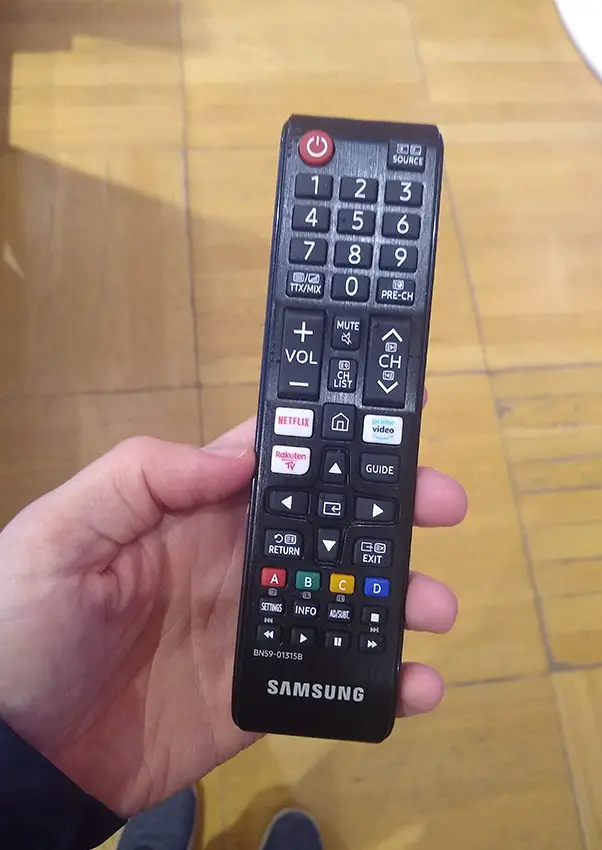
To make sure this isn’t the cause, switch on your TV, remove the batteries from your remote, and see if the TV stays on.
You should also double-check that you don’t have a spare remote that’s fallen down the side of your sofa, or has got caught under something and which is pressing the power button.
3. Check Your Wall Socket Voltage
When your Samsung TV logo comes on and then turns off, you naturally jump to thinking that there must be a fault within your TV itself.
Actually, the fault can sometimes be within your household power supply, or more specifically within the surge protector or smart plug that your TV is plugged into.
So, you need to confirm that your wall socket is supplying enough power and that there is no interruption of supply during use.
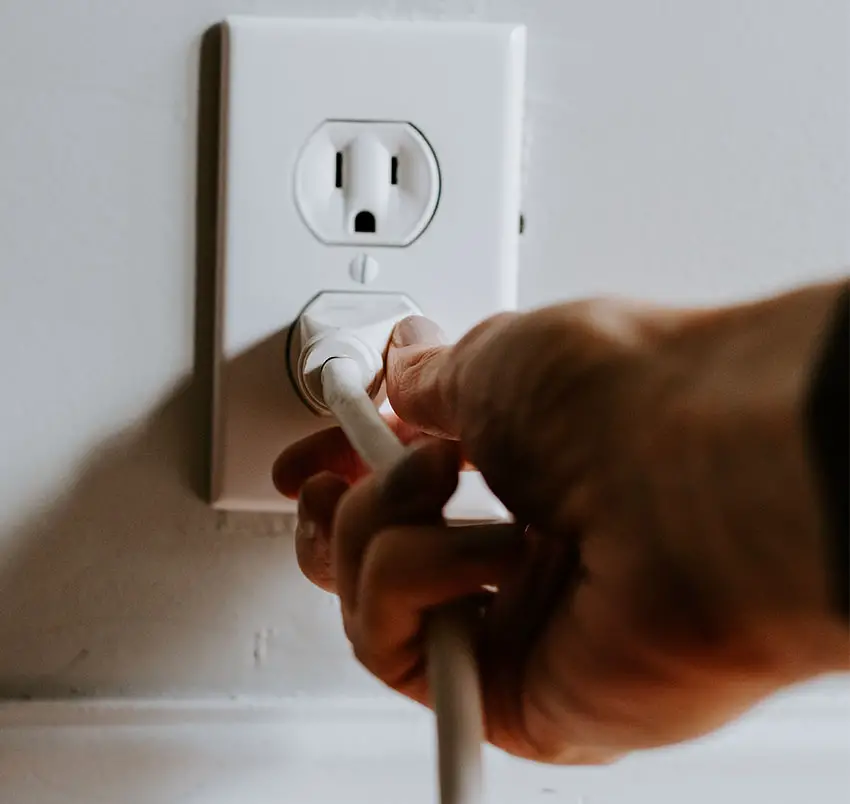
There are a few methods that you can use:
- Unplug your Samsung TV from your wall socket.
- Remove any surge interrupters or smart plugs so that you have a direct line to your wall socket.
- Plug another large device that you know works into the same socket and check that the new device works as normal. (It’s important that this device draws approximately as much power as your TV, to confirm the socket is fully working).
- Remove the other device and plug your TV back into this socket.
- Switch on the power and switch on your TV using the physical power button located somewhere on its case (usually beneath the Samsung logo).
- See if the red light is solid. If so, this means your TV is getting sufficient voltage.
- If your Samsung TV’s red light is blinking, then repeat these steps with another wall socket to confirm your household electricity supply isn’t a problem.
Also, make sure to double-check that your power cord and power socket on your TV aren’t damaged, as kinks or knots in the power cable can internally damage it without any obvious damage to the outer cable cover.
If you’ve confirmed your household power supply is consistent, then we can assume the problem lies somewhere within your TV itself.
4. Switch Off Anynet+
If your Samsung TV turns on and then shuts off after a few minutes, or after a variable time, there could be an HDMI issue.
You can try removing all external devices, including those connected by Bluetooth and any coaxial or signal cables so that the TV only has a power cable going into it.
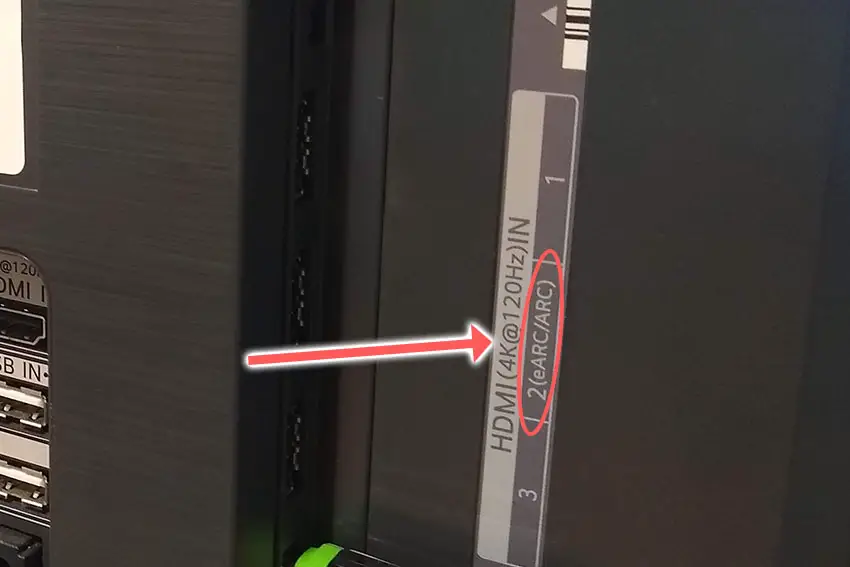
This is because a flaw with the HDMI-CEC settings can stop your TV from coming on properly if you have other devices, particularly game consoles, plugged into your TV via HDMI ARC/eARC.
HDMI-CEC allows two-way communication between your TV and console and set-top box, allowing your console or box to switch your TV on and off automatically.
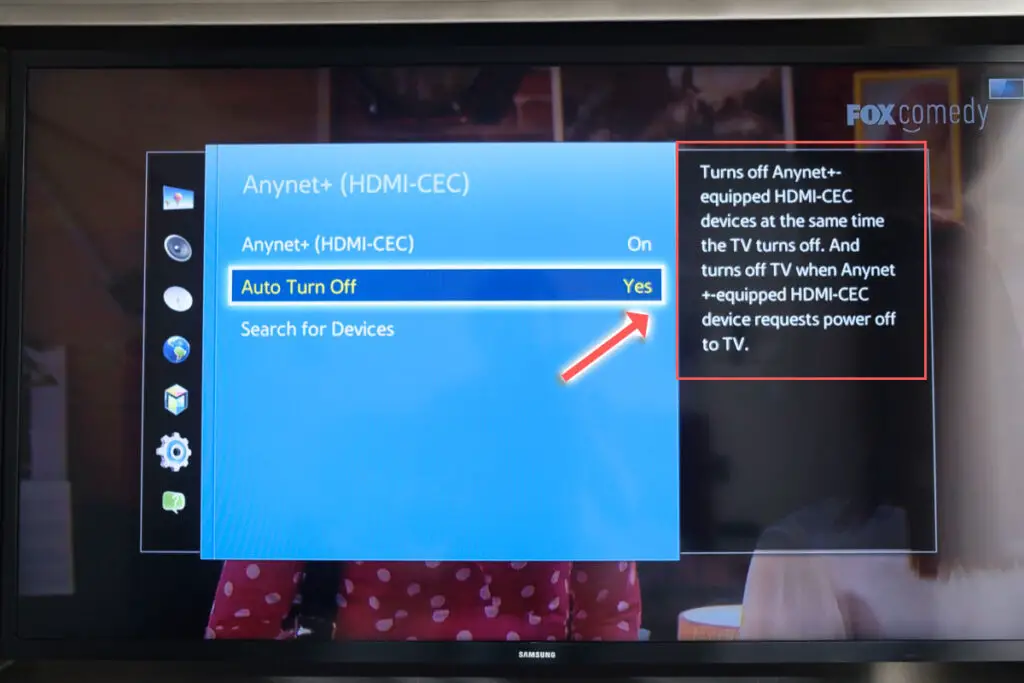
The problem is that if you do not switch inputs on your TV away from your console’s input before switching off your TV, then your TV will not “listen” to your remote, and it can switch itself on and off without your input.
Unplugging all cables will temporarily solve this, so if your TV is working as normal with no HDMI cables attached, then try switching off HDMI-CEC before re-instating the cables.
To switch off HDMI-CEC on a Samsung TV:
- Press Home on your remote.
- Go to Settings.
- Then General.
- And External Device Manager.
- Find Anynet+ (HDMI-CEC) in the menu and click to deactivate it.
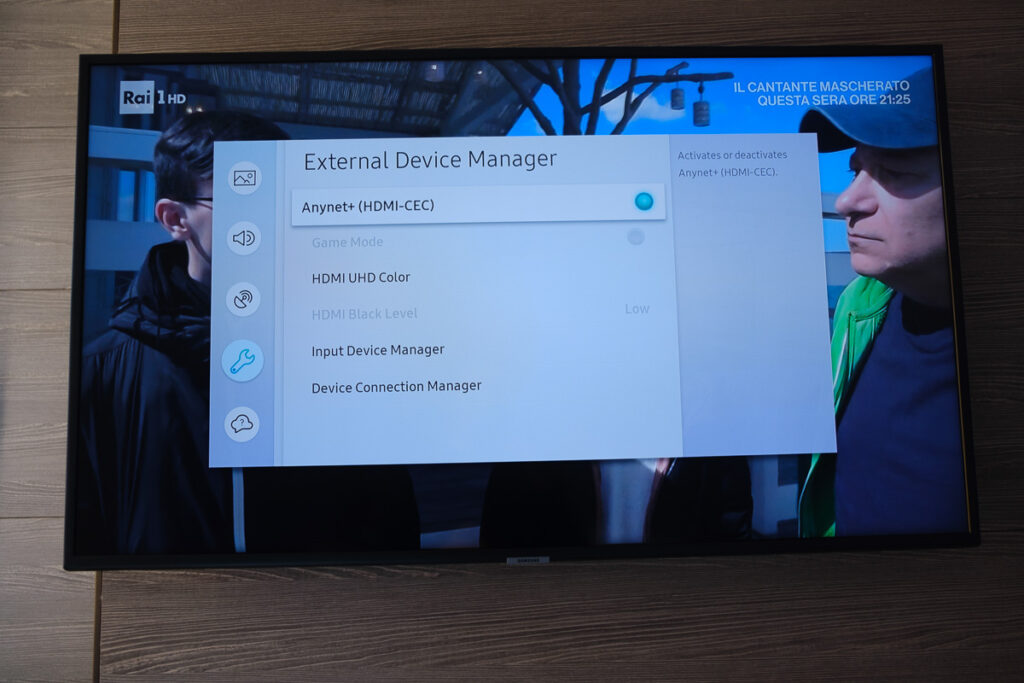
5. Turn Off Any Timers and Eco Mode
Samsung TVs have sleep and power-off timers, but the location varies depending on your TV’s age.
If you’re seeing messages on-screen like, “Samsung TV will turn off in 30 seconds,” then you need to reset your sleep timer.
You can switch off the Samsung TV sleep timer on older models by:
- Going to Settings.
- Then General.
- And System Manager.
- Click Time.
- Before choosing Sleep Timer and make sure this is set to Off.
- There is also an Off Timer just below this which should also be disabled.
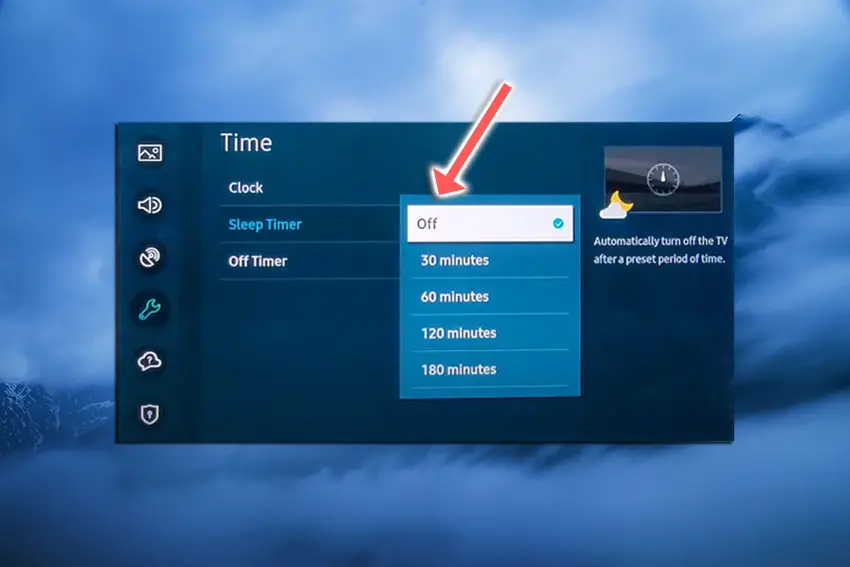
There is an additional energy-saving Eco Timer on more modern Samsung TVs which turns the TV off if it receives no signal for a set period of time.
To check that this isn’t causing your issue, switch it off. Go to Settings -> General -> Eco Solution and set both Auto Power Off and Power Saving Mode to Off.
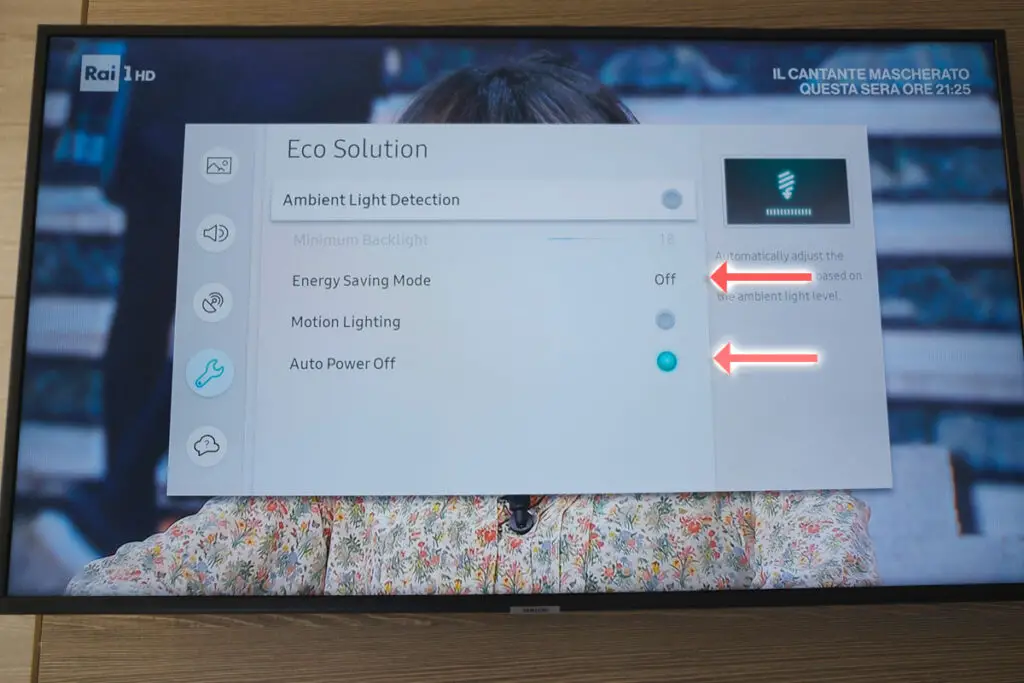
You might also find a No Signal Power Off setting on some models, which should also be disabled.
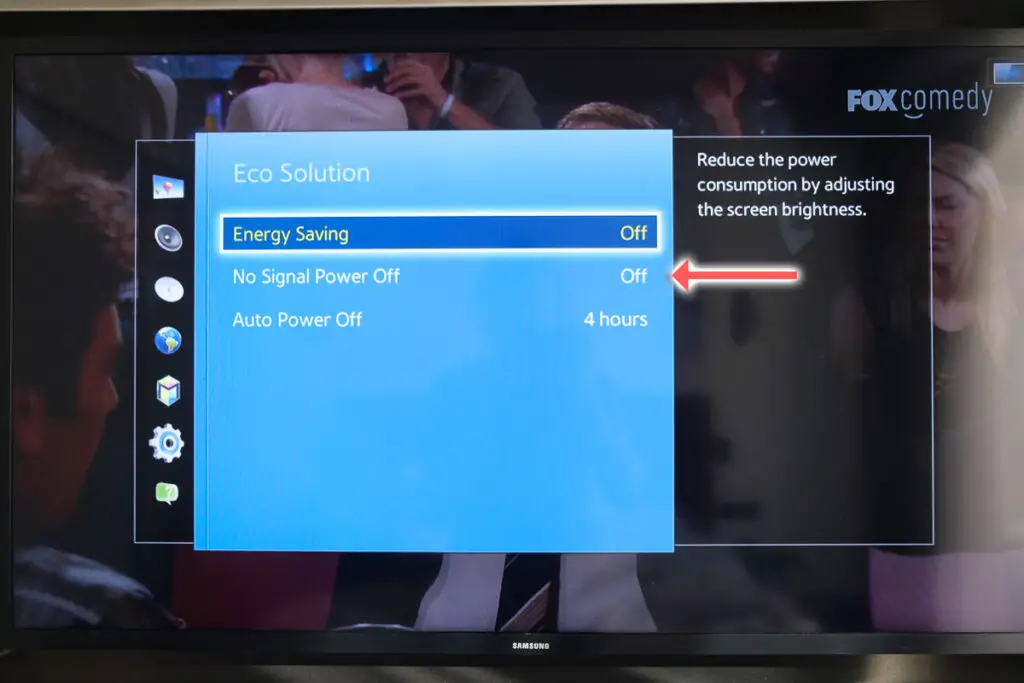
6. Manually Update Your TV’s Firmware
If your TV turns off after a set amount of time (usually a few seconds or minutes), this could be because your TV has become stuck in a firmware update cycle, where the final restart is not completing the update as it should.
The auto-update cycle will only run over WiFi or through an Ethernet cable, and WiFi connection issues can be a big part of the update failure, so first of all, switch off your TV’s WiFi.
To switch off your Samsung TV’s WiFi:
- On your remote, press the Settings or Menu button.
- Go to General.
- Then go to Network.
- And Reset Network.
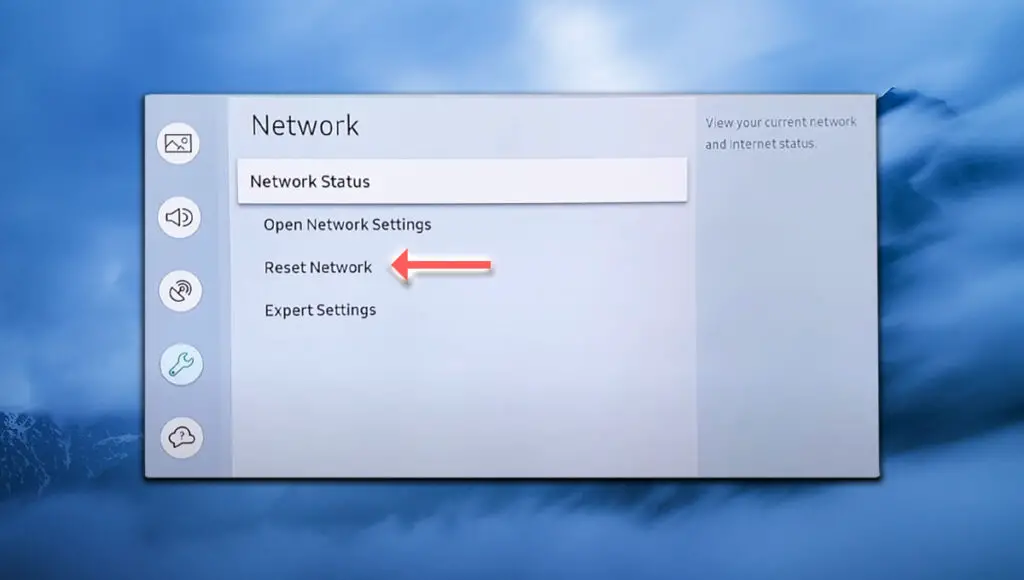
- On older models, go straight to Network, then Network Settings, and Forget Network.
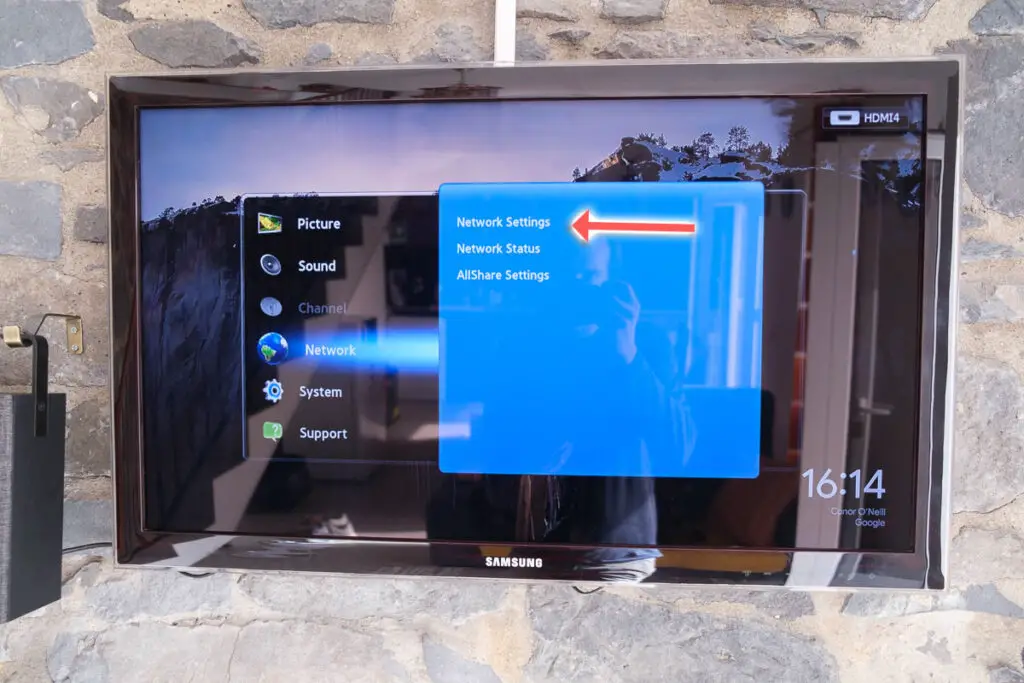
If switching off WiFi stops your TV from restarting, then you can first try connecting an Ethernet cable to see if it will complete the update.
If not, you will need to update it manually via USB:
- Press the Menu or Settings button on your remote and go to Settings.
- Go to Support.
- Then Contact Samsung or About This TV.
- Take note of the Model Code and Software Version currently installed.
- Go to Samsung’s Support site and enter your model number.
- Select Manuals & Downloads and look for the newest firmware version.
- If this Firmware Version is later than the version you noted was installed on your TV, then download it, along with the Firmware Update User Manual which will give you full instructions on how to install your update.
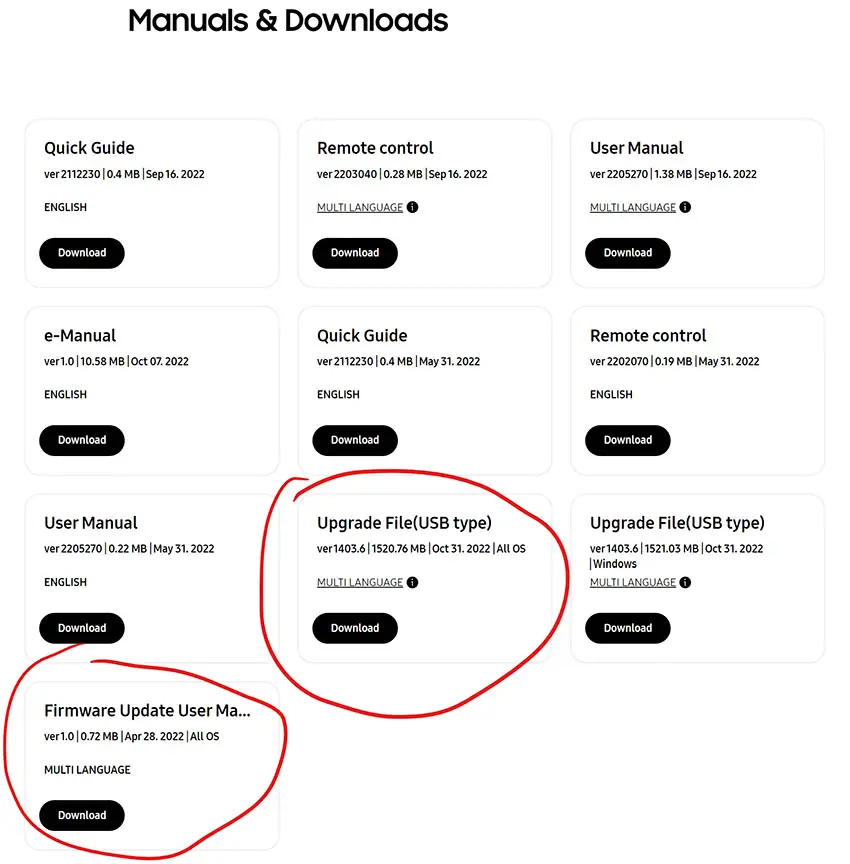
7. Check Event Logs
For any Samsung TVs manufactured since 2019, you have access to Event Logs which detail the reason for your TV switching off.
To access Event Logs:
- Go to Settings.
- Then Support.
- And About This TV.
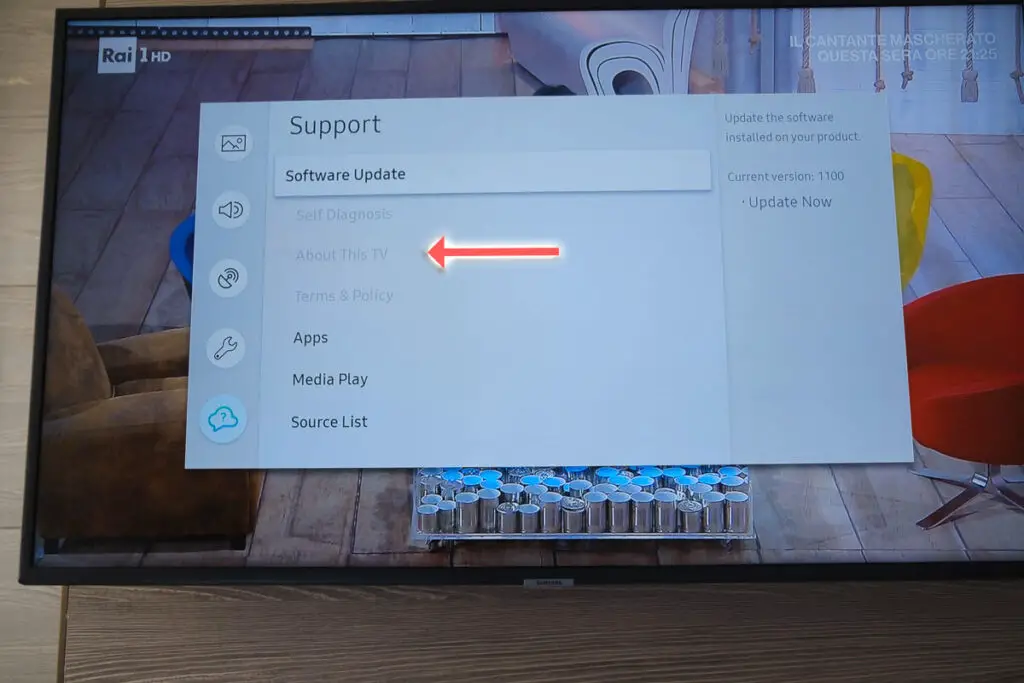
- Click Event Logs and you will see a detailed list of processes your TV has run.
- Look for anything with the preface, “Power-off Reason“, which should give more details of what’s going on.
- Pay particular attention to anything with “Update” in it, as this will likely refer to a boot loop from a stuck update.
- If you see “CEC Command” in the Event Log, this means that a device over HDMI-CEC has turned your TV on or off. You can disable this by switching off HDMI-CEC as above.
- If “One Invisible Connection” appears and you are using a Frame TV, this most likely means that you have a poor connection between the One Connection cable and your TV. Try re-inserting the cable and check that it isn’t pinched anywhere along its length.
8. Factory Reset Your Samsung TV
Returning your TV back to its factory settings is a more extreme step, as it will delete any personalization features, downloaded apps, or connected devices, but it’s always worth a shot when other methods haven’t worked.
To factory reset a Samsung Smart TV:
- Press the Menu or Home button on your remote and go to Settings.
- Then General & Privacy.
- And Reset.
- Enter your PIN, which by default is 0000 (four zeroes) for Samsung.
- Then select one final Reset in the popup.
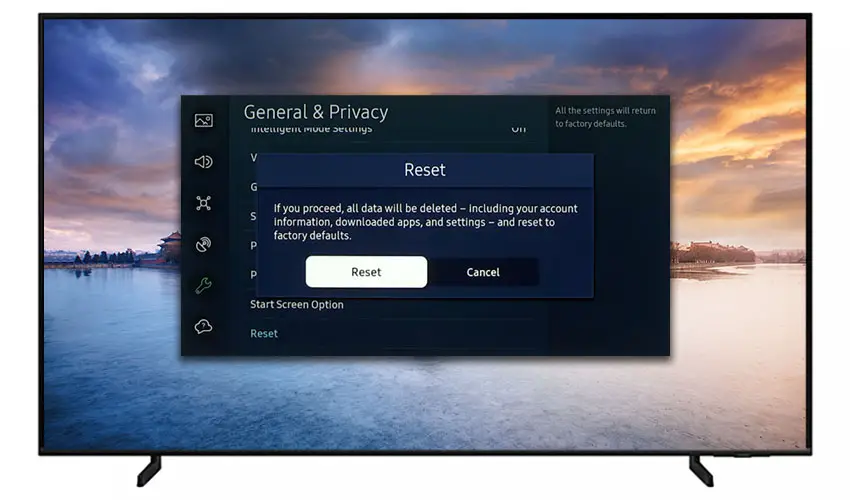
Samsung has provided a video of these steps in the video below.
If you don’t have your remote, then you can get to the same menu items by using the physical Menu button that is most likely underneath your Samsung TV’s logo, next to the Power button.
Press this and use the Volume + and – or Channel + and – depending on the model to follow the steps above.
9. Video IC Chip Overheating / Failed Capacitors
A more serious issue, but one that is still easily fixable at home, is a failure caused by overheating of the internal components.
Switch your TV on and wait for it to turn itself off. Then, move your hand around the back panel of your TV and see if you can find any hotspots.
If any area is nearly too hot to touch, then you have likely found your overheating chip. Mark this location and we can take a look at it in more detail.
If there are no hotspots, then there could be capacitor damage, which we will also need to take off the back panel to investigate.
To check this, you will need to remove the back panel of your TV, which will invalidate its warranty, so this is only practical for older TVs.
To remove your TV’s back panel:
- Unplug your TV, hold down the power button, and wait for at least 30 minutes. There are large capacitors in the power board for the backlight and these can hold charge for an extended period of time.
- Place your TV face down on a large table or workbench. Make sure there is nothing that can scratch the screen on your work surface.
- Ground yourself.
- Open your TV by unscrewing the screws in the back panel. It should come apart in two pieces: front and back.
- Put the back panel somewhere out of the way and take a look at the circuit boards that have been revealed.
- You will see a T-Con panel for translating the signal into a TV picture, a power board, and a main board.
The Timing Control (T-Con) board is a small PCB board that drives your TV’s panel, sending the signal to each pixel row of your screen using internal clocks to keep each row in sync.
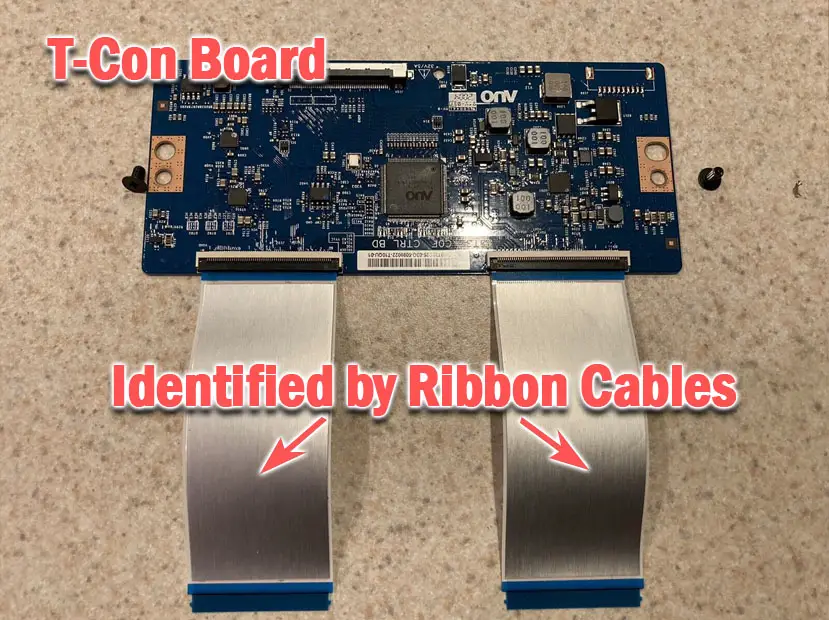
The Main Board is a larger PCB where you plug your HDMI and other connectors into. This does a lot of the work of translating the input into signal, which then goes to the T-Con board.
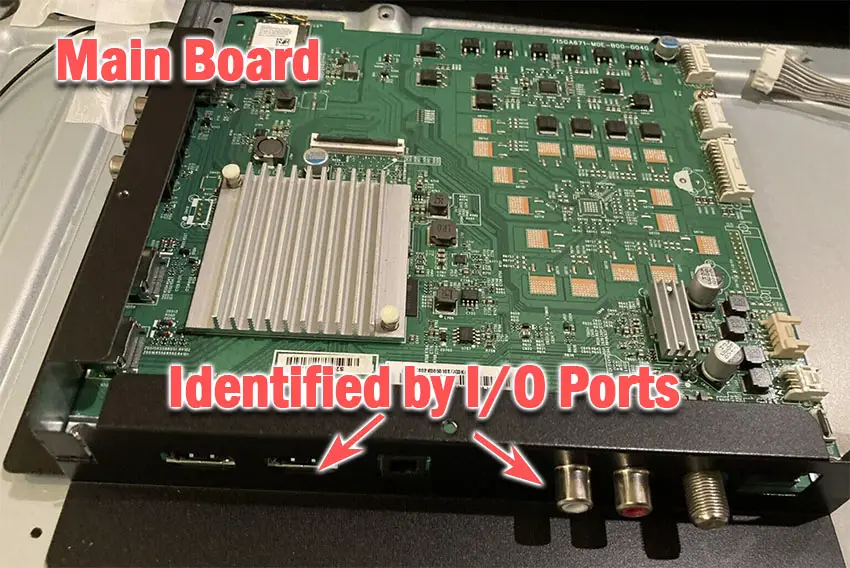
The Power Board is where you plug in your power cable, and which converts your home electricity supply into a voltage and current that your TV can use.
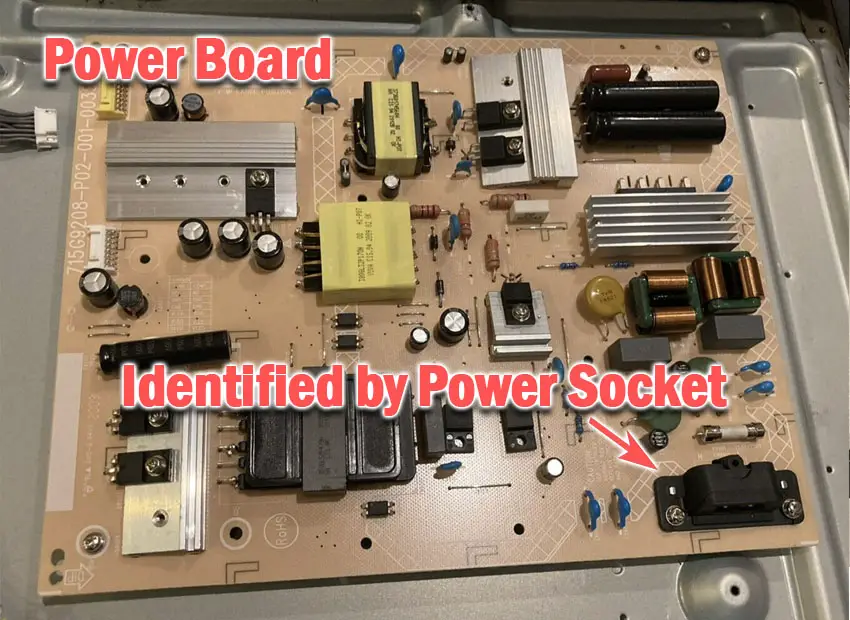
There may also be a number of additional boards, such as a backlight inverter, but these vary between models and shouldn’t be the cause of your Samsung TV turning off every 5 seconds.
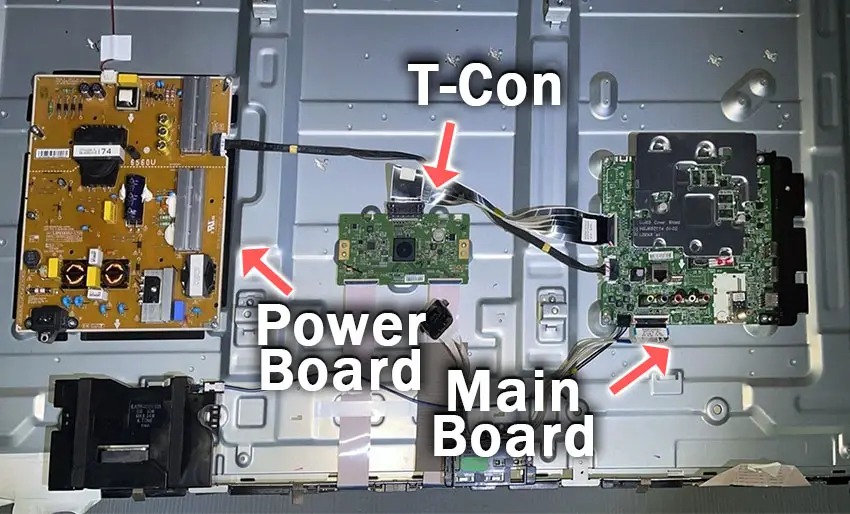
If you found a hotspot earlier, find the chip that corresponds with the hotspot’s location. These can be replaced with a soldering iron, but given the difficulty of finding an identical logic chip, you might want to replace the entire board that it is connected to.
Both Power and Main Boards can be replaced for around $30 – 50 from eBay.
To get the correct board, note the Power / Main Board model number written on the label on the board, and put this into eBay. You can also search for the specific chip if you are confident you have identified it.
See how to replace the board in the video below.
If you don’t want to replace the board, you can instead try directing a small fan through the grill of your TV, or even cutting a small hole over the chip and pointing the fan in there.
You can also reduce the brightness of the backlight, as powering this requires a large drain on some of the TV’s chips and so causes a lot of heat.
If you did not find a hotspot earlier, then look at the capacitors on the power and mainboards for signs of bulging or damage. Capacitors are particularly prone to damage if subjected to power surges, and are a very common cause of your Samsung TV getting stuck in reboot loop, showing the logo for a few seconds before switching off again.
If you see any damaged capacitors, they can be easily replaced with a soldering iron and new components costing a few cents each, or by entirely replacing the board.
Check out this video for a good example of doing this at home.
Samsung TV Support and Warranty
You can check your current warranty status at Samsung’s warranty site.
Unfortunately, warranties typically only last a year unless you have already paid to extend it.
Because TV problems can occur at any time, if your TV is under one year old, return your TV under warranty and get it fixed.
You can also try to contact Samsung support directly to see if they can offer any help.
You can use the Samsung support site to help diagnose your problem, but if you are at this stage, then you are better off calling them directly at:
- 1-800-SAMSUNG (726-7864)
They are in the office 7 am – 12 am EST, 7 days a week, but their automated chatbot is available on their site 24/7.
Even if Samsung won’t fix your TV, they might still offer you a discount on a future model if you pester them hard enough! Always worth a try!
Conclusion
- If your Samsung TV will not stay on, then the most likely cause is that it is stuck in a boot loop, followed by another device on your network turning off your TV via HDMI-CEC.
- Try turning off your TV’s WiFi, or disabling your router’s WiFi if you can’t do this, then connect an Ethernet cable to your TV to see if it will complete its update.
- If it still switches off and won’t update, try doing this manually over USB.
- If the Event Logs tell you that another device is turning your TV off, then disable HDMI-CEC from the External Device Manager menu.
If you haven’t been able to fix your problem using the steps above, then your next port of call should be customer support, who can advise you if they are able to fix it.
If not, then you can try a local TV repair technician, but if they are unable to help, then unfortunately you are most probably looking at having to get a new TV.
Read More:
Samsung TV blue screen of death fixes





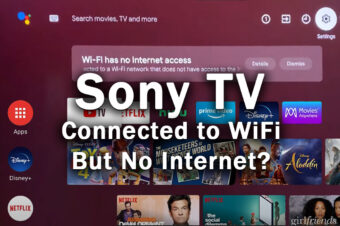
Leave a Reply